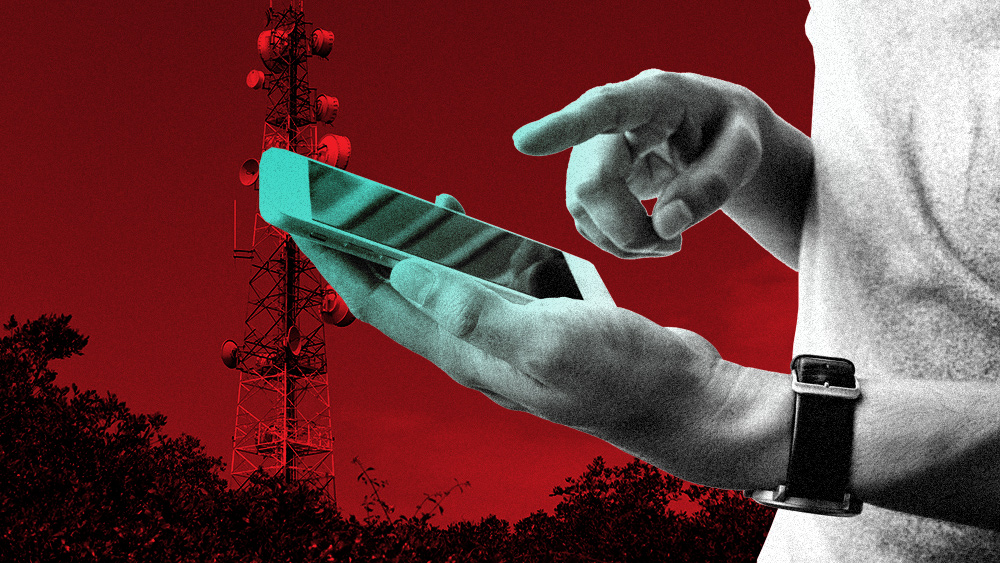This article focuses on the subject of 5G radiation, a non-ionizing electromagnetic radiation. Since 5G radiation is small, it does not have the ability to break chemical bonds in biological tissue or cause any changes to cells. It isn't known whether 5G radiation can affect the risk of developing skin cancer, and no evidence has been found to suggest that it can cause any other diseases.
Millimeter-wave radiation with high frequency
High-frequency millimeter wave radiation emitted by mobile devices and wireless networks could cause health issues to humans. There are several ways that this radiation can be harmful. In some instances, the radiation can cause damage to a person's DNA. In other instances, it may cause damage to other areas of the body, like the brain.

Recent studies have shown that 5G technology may induce the heating of tissues. This is why the International Council on Non-Ionizing Radiation Protection (ICNIRP) has asked to review the current thermal and biological safety standards. The current standards of exposure don't protect people from overheated heat exposure when exposed to millimeter wave pulses.
Skin cancer risk
There is no definitive answer to the question of whether 5G radiation could cause skin cancer. However, it is believed that 5G RF EMFs behave as high-LET ionizing radiations. As 5g towers radiation , they can cause excessive levels of free radicals in the skin. The FCC hasn't issued any specific guidelines regarding the dangers of 5G technology, and the debate is ongoing.
Although there are https://note1s.com/notes/VL45HY8 of studies regarding the impact of higher-frequency radio waves on the health of humans but they've remained limited in the scope. However, there is concern over the effects of millimeter-wavelength exposure on oxidative stress and gene expression. The effects could extend to the skin and various organs, including the brain.
Impact on other diseases
A new generation of wireless technology, called 5G, is rapidly gaining ground However, researchers are warning of its possible health risks. 5G technology is expected to significantly increase the amount of electromagnetic radiation found in our surroundings. This is a problem that has sparked debates in many nations, including Switzerland. In September 2017 390 scientists and doctors were in favor of an end to 5G deployment. The motion was not taken seriously by the European Commission, which is in charge of regulating the use of technology like 5G.
Therefore there is a need for more research to assess the health effects of 5G. While we wait, studies have shown that 5G doesn't cause the same effects in humans as radiofrequency from the older mobile networks. Additionally, it does not transmit the new coronavirus type. Furthermore it does not make people more vulnerable to infections caused by viruses.
Exposure measurement
Monitoring exposure to 5G radiation is a crucial aspect of ensuring the safety of 5G networks. There are two ways to determine exposure. One involves measuring RF power absorption by human tissue. The other involves measuring the quantity of radiofrequency energy released by an object. Radiofrequency energy (RF) is an energy field that comes through radio transmitters.
The United States, the FCC has set a limit on the power density of 5G mobile devices. These tests only test the power density of a distance of a few inches, and the FCC does not require measurements of each beam. However, how much power is generated by each beam can be determined by computer simulation. The most likely scenario is selected according to the beam's configuration. each beam.
5g radiation
There's been plenty of debate about whether the effects of 5G radiation are detrimental to the health of people. For instance, the Swiss Government, for example has issued an assessment that concludes that 5G technology does not cause adverse health effects in the short term, but there are no studies that show long-term impacts. But, the report contains a number of problems that include biased reports.
The power and frequency of the radio waves that carry energy depend on the frequency. The energy carried by a millimetre wave will be similar to that of current radio waves however they will be less visible and are more suitable for environments with high density as they won't be easily block by walls or glass. High-density urban areas would require a large number of small, low-power sites, while suburban areas would benefit from 5G sites that operate at lower frequency.
